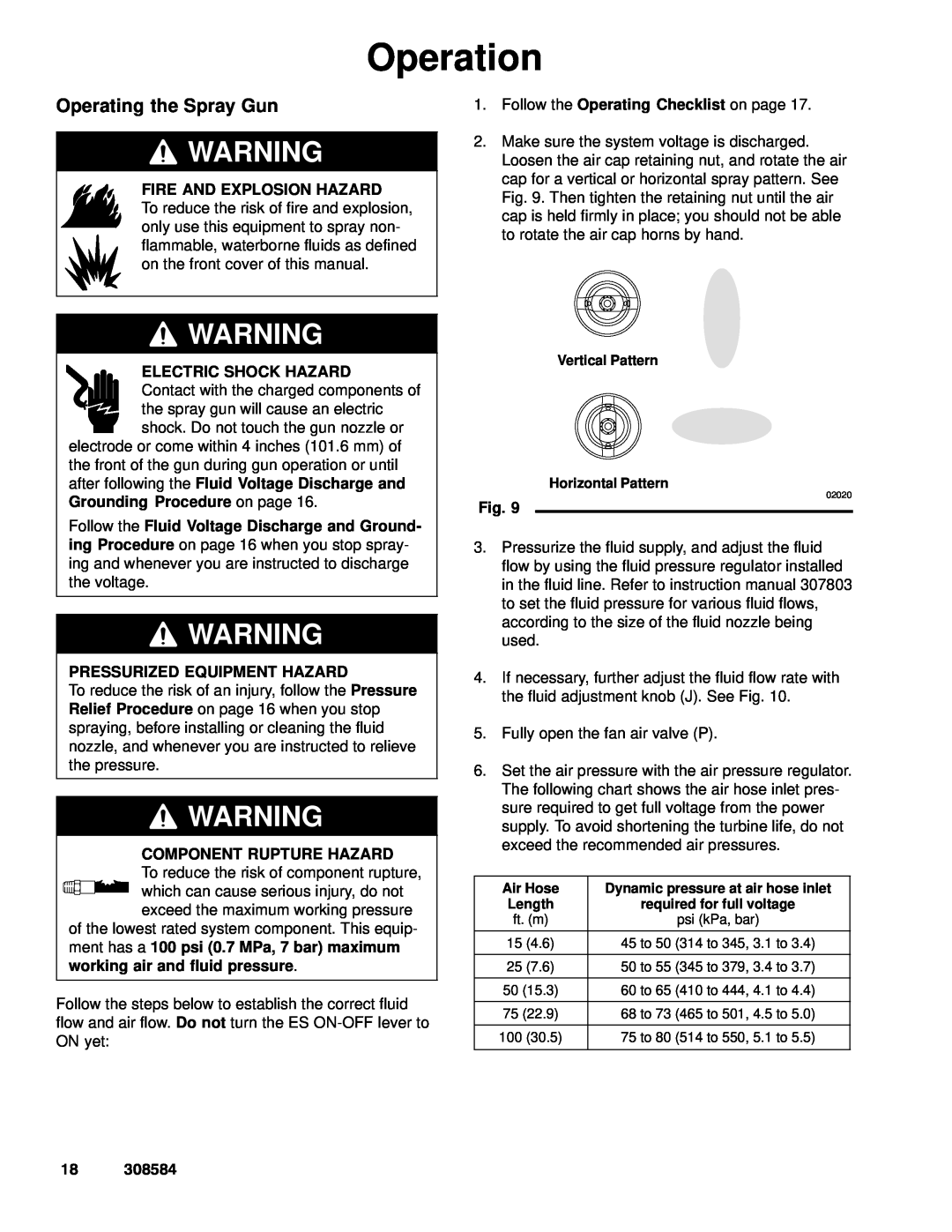
Operation
Operating the Spray Gun
![]() WARNING
WARNING
FIRE AND EXPLOSION HAZARD
To reduce the risk of fire and explosion, only use this equipment to spray non- flammable, waterborne fluids as defined on the front cover of this manual.
![]() WARNING
WARNING
ELECTRIC SHOCK HAZARD
Contact with the charged components of the spray gun will cause an electric shock. Do not touch the gun nozzle or
electrode or come within 4 inches (101.6 mm) of the front of the gun during gun operation or until after following the Fluid Voltage Discharge and Grounding Procedure on page 16.
Follow the Fluid Voltage Discharge and Ground- ing Procedure on page 16 when you stop spray- ing and whenever you are instructed to discharge the voltage.
![]() WARNING
WARNING
PRESSURIZED EQUIPMENT HAZARD
To reduce the risk of an injury, follow the Pressure Relief Procedure on page 16 when you stop spraying, before installing or cleaning the fluid nozzle, and whenever you are instructed to relieve the pressure.
![]() WARNING
WARNING
COMPONENT RUPTURE HAZARD
To reduce the risk of component rupture, which can cause serious injury, do not
exceed the maximum working pressure of the lowest rated system component. This equip- ment has a 100 psi (0.7 MPa, 7 bar) maximum working air and fluid pressure.
Follow the steps below to establish the correct fluid flow and air flow. Do not turn the ES
1.Follow the Operating Checklist on page 17.
2.Make sure the system voltage is discharged. Loosen the air cap retaining nut, and rotate the air cap for a vertical or horizontal spray pattern. See Fig. 9. Then tighten the retaining nut until the air cap is held firmly in place; you should not be able to rotate the air cap horns by hand.
Vertical Pattern
Horizontal Pattern
02020
Fig. 9
3.Pressurize the fluid supply, and adjust the fluid flow by using the fluid pressure regulator installed in the fluid line. Refer to instruction manual 307803 to set the fluid pressure for various fluid flows, according to the size of the fluid nozzle being used.
4.If necessary, further adjust the fluid flow rate with the fluid adjustment knob (J). See Fig. 10.
5.Fully open the fan air valve (P).
6.Set the air pressure with the air pressure regulator. The following chart shows the air hose inlet pres- sure required to get full voltage from the power supply. To avoid shortening the turbine life, do not exceed the recommended air pressures.
Air Hose | Dynamic pressure at air hose inlet | |
Length | required for full voltage | |
ft. (m) | psi (kPa, bar) | |
|
|
|
15 | (4.6) | 45 to 50 (314 to 345, 3.1 to 3.4) |
|
|
|
25 | (7.6) | 50 to 55 (345 to 379, 3.4 to 3.7) |
|
| |
50 (15.3) | 60 to 65 (410 to 444, 4.1 to 4.4) | |
|
| |
75 (22.9) | 68 to 73 (465 to 501, 4.5 to 5.0) | |
|
|
|
100 | (30.5) | 75 to 80 (514 to 550, 5.1 to 5.5) |
|
|
|
18 308584
